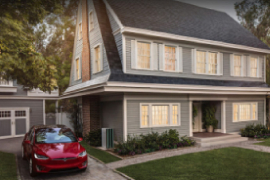Home Battery Energy Storage has absolutely crashed into the market over the past 2-3 years, especially here in Australia. While there’s also big news happening in the EV world, in this piece we’ll be focusing on how batteries are impacting the Home Energy market and also where things look to be going in the future.
Table of Contents
Current Battery Storage Market
Since Tesla dropped their OG Powerwall 1 way back in April 2015 things have just exploded. They released the successor about a year later in October 2016 halving the $/kWh price and lighting an even bigger fire under all the other battery manufacturers.
As a result, if you ask the average person out there “who makes home battery storage?” they would most likely answer “Tesla”. However there are a lot of other really good, solid manufacturers competing as can be seen in our comprehensive Home Battery Energy Storage Comparison table.
From very well known companies like LG all the way through to generally unheard of companies like BYD competition has heated up greatly with customers almost spoilt for choice.
Generally speaking though if you’re purchasing a home battery storage system right now in late 2018, you’re looking at spending around $750-$1,000 per kWh of storage once the unit is delivered and fully installed.
As this is still quite a high cost, most people that are purchasing them are only buying relatively small amounts. Anywhere from 2-14 kWh’s which mostly end up getting used to store solar generated power so that it can be used later on in the evening.
This allows for the cheapest upfront cost, whilst minimising the amount of power consumed from the grid. With some systems also offering support for powering the house during power outages too which is nice.
Future Trends
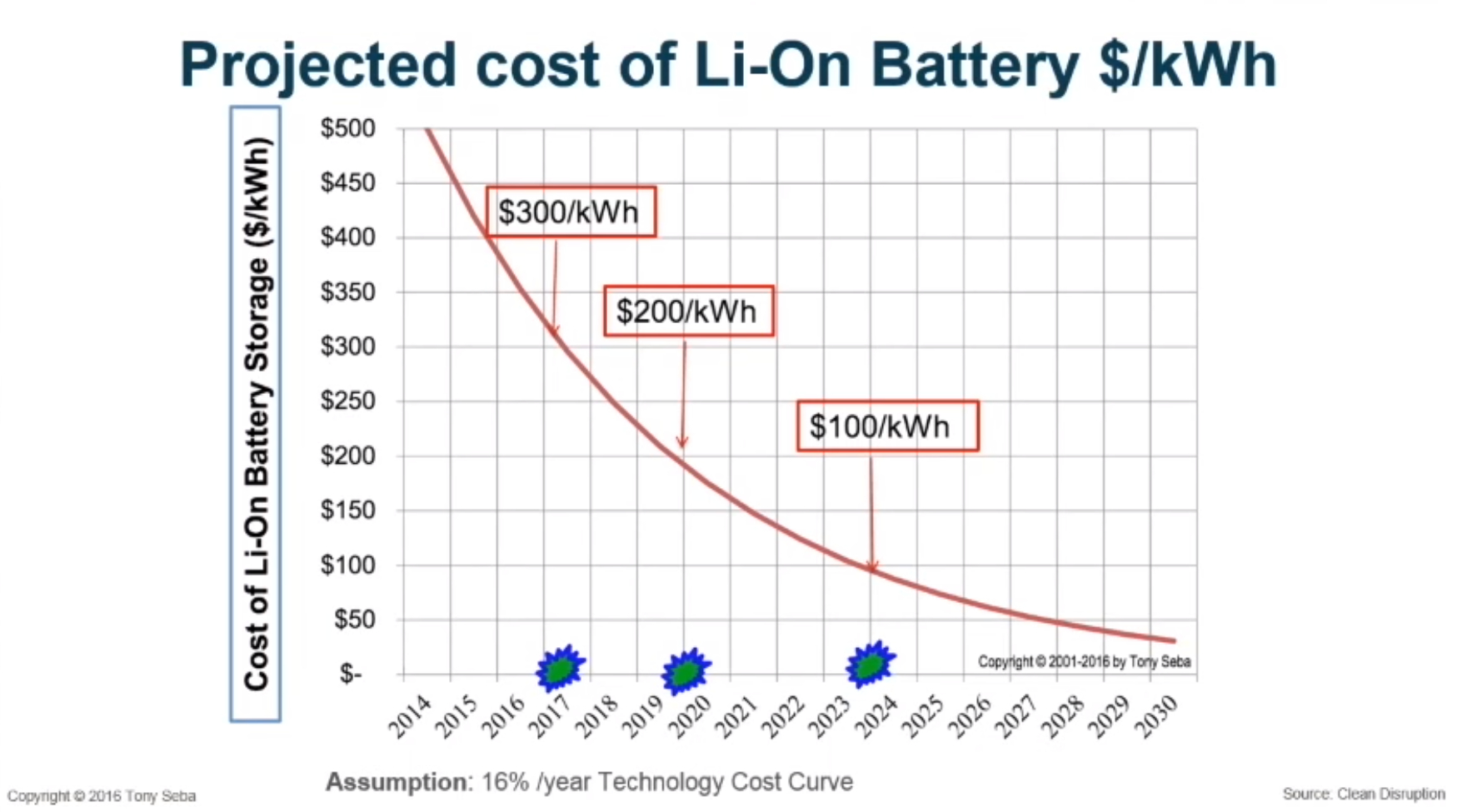
Source: The Energy Storage Disruption – Tony Seba
While the above graph is in USD and more targeted at the raw Li-On battery cost as opposed to a final, installed home battery storage system product it does give a good idea towards what we can expect.
If costs are around the $750-$1,000 AUD / kWh mark now for a fully installed home battery storage system we can use that to help predict how quickly this price should drop, roughly speaking.
This huge price drop is due to a number of converging issues, but the main one is just the simple fact that there are now three, multi-trillion dollar industries all investing in getting this technology cheaper.
- IT, Phones, Laptops, IoT, Electronic etc
- Automotive EV’s
- Home And Grid Scale Energy
These three huge industries are all combining and competing to get the price lower, the number of recharge cycles higher, the charge rate quicker, the safety better and it’s created an unstoppable march towards better and better batteries.
Lithium ion battery costs have plummeted around 14% every year over the past 15 years. With billions in R&D as well as manufacturing now ramping up to the GWh scale from multiple companies things just keep getting better and better.
The Solid State Wild Card
While Lithium Ion batteries currently garner all the attention and are progressing at a very solid pace, there’s another leap frog technology that promises to kick things up a notch even further. That is of course, solid state batteries.
Solid state batteries promise to have a number of benefits over Li-On batteries such as safety, quicker charging, longer battery life and less hazardous materials. However their main desirable perk is that of energy density. While current Li-On batteries are around 250-300 Wh/kg, solid state batteries are promising 400 Wh/kg or even higher.
The key thing to realise is that this is mostly important to the IT / Automotive sectors. This is because those industries are highly concerned with energy density, weight and fast charging. And while solid state batteries have previously only been produced in labs, a new company has just recently announced mass production.
Qing Tao Energy Development Co, a startup that spun off of Tsinghua University, one of the highest-ranking technical universities in China, claims to have deployed the first solid-state battery production line in the country.
The production line, located in the city of Kunshan, East China, has a capacity of 100 MWh per year and they plan to ramp it up to 700 MWh by 2020.
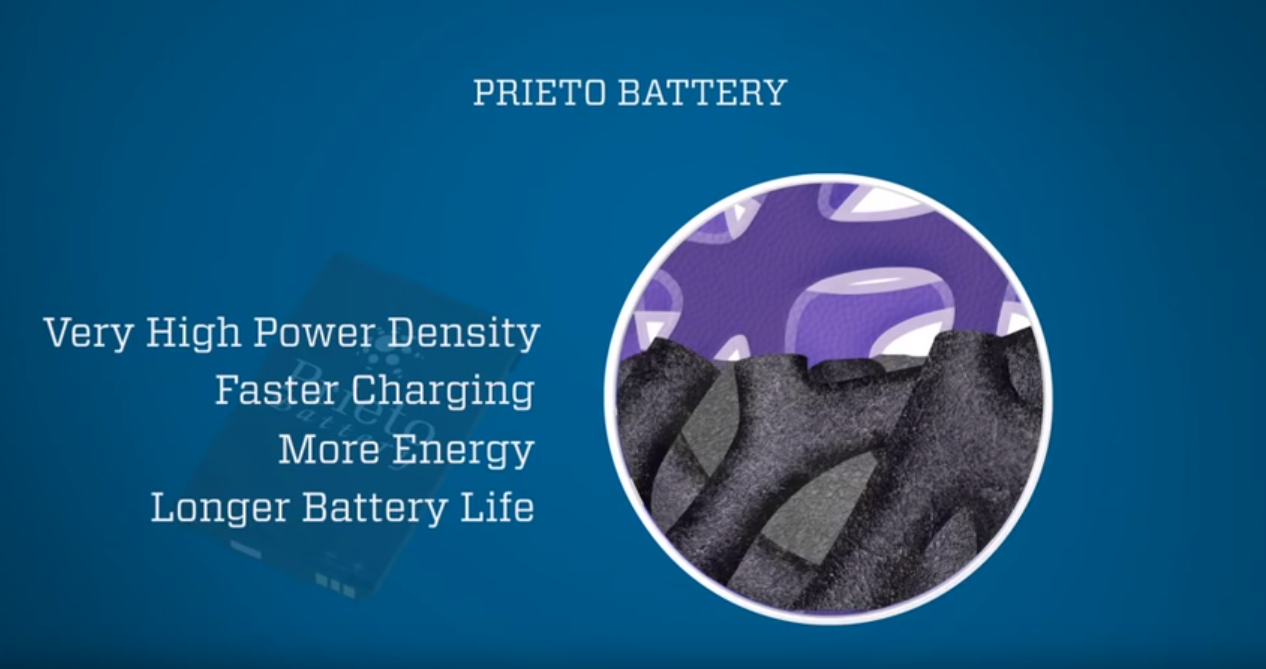
A Prieto Battery and its benefits
As stated above though, solid state batteries probably won’t be super important initially to the Home Storage industry as high energy density isn’t a big factor when it comes to bolting a battery to the side of a house. It doesn’t matter if that battery is 100 kg or 200 kg, what matters is the price per kWh and how many cycles it can handle.
Solid state batteries would just make home battery storage more expensive which isn’t what anyone wants! It would increase safety too, however home battery storage units don’t usually get put under the same extreme conditions like EV batteries do, so there’s less chance of thermal run away happening.
While it seems a bit odd to mention solid state batteries here in this piece given they’re obviously not that important to home storage… I just wanted to make it clear that if you’re “waiting for solid state storage” to hit the market before you buy a home battery system it’s probably not really a good idea as home storage systems will likely be the last ones to get this technology!
What Will Home Battery Storage Be Like In 2019/20?
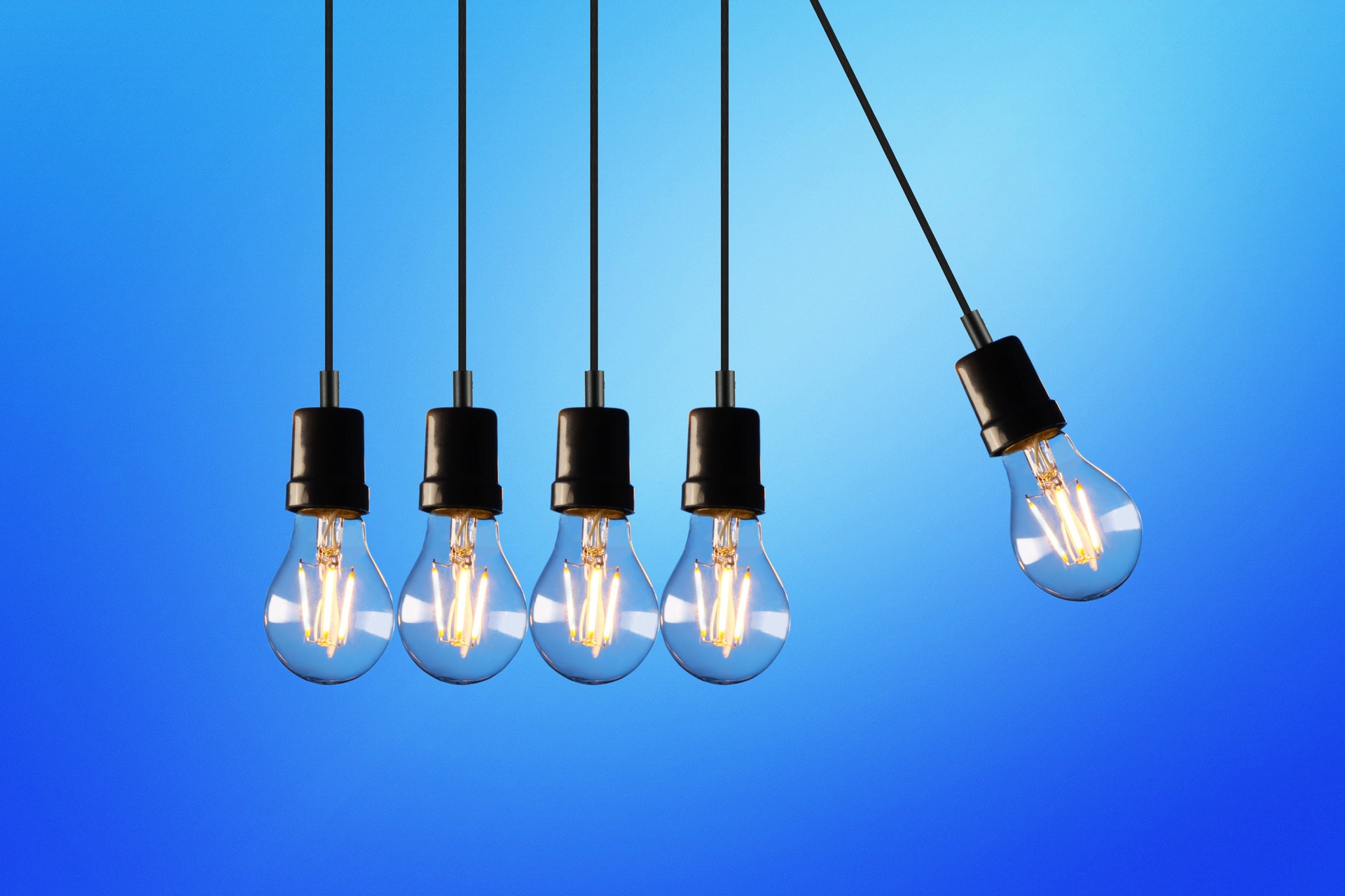
With the consistent and proven march of battery price reductions I think it’s quite safe to predict a lowering of $/kWh over the next 2 years. The obvious question is “by how much?”
If we take the last 15 years and the ~14% per year progress made as a guide then that $750-$1,000 AUD / kWh figure should be more like $550-$750 AUD / kWh by the end of 2020. This would put the current Tesla Powerwall 2 at around $9,100 AUD for 14 kWh. Hopefully Tesla have released their Powerwall 3 by then though!
Obviously even with a 14% per year drop in prices batteries are still going to be quite expensive in 2020. However what may change quite a bit is the other services and abilities that surround the home battery storage market.
For example, if you have a 14 kWh battery hooked up at your home and to the grid, it’s possible for you to export power to the grid at very specific times of unusually high demand. These high demand times can actually cost power generators huge amounts of money and so they’re willing to pay consumers a small amount if it means they can remotely trigger your battery to export energy to the grid and help sure up the power balance.
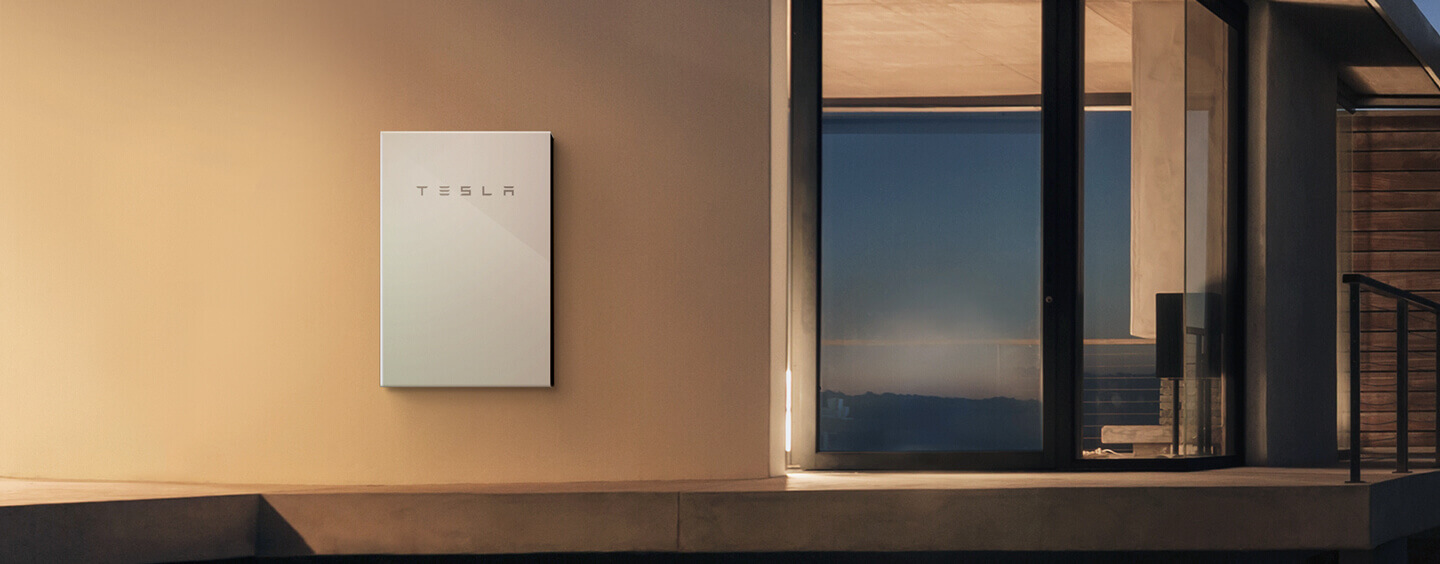
This can even work in reverse when the power companies have excess power and can actually pay battery owners to use power when they otherwise might not, such as at night time when grid demand is low.
All these cases – as well as some others – are quickly developing into what could end up being an added income stream for those that own home battery storage systems and are willing to have their power distributors trigger them at certain pre-defined times.
There are already several trials underway in various states here in Australia such as South Australia where power networks are combining hundreds or thousands of home battery storage systems into what they’re calling Virtual Power Plants (VPPs). Imagine 1,000 homes all being triggered remotely at the same time to export their stored energy back into the grid.
If those 1,000 homes all had a Powerwall 2 in them and were charged, they could potentially output up to 5 kW each or 5 MW’s of total power, all within seconds of the power company sending the command.
This huge influx of power could help stabilise the grid during high demand times such as during hot summers days or even step in instantly when one of our clunker old coal plants fails again.
Summary

2020 isn’t that far away anymore and with battery prices still continuing to drop things only look to get better. While it might be a few more years after 2020 before we break that $100 / kWh mark and can buy batteries for days, other new and inventive ways of monetising home battery storage are quickly coming online.
There’s even numerous blockchain based companies starting up which allow individual home users to directly sell – peer to peer – their electricity to others completely independent of the big energy companies. This saves money and gets even more income for the battery owners.
Whether all these new and inventive income streams as well as price drops all add up to making home battery storage a no-brainer when it comes to home power will have to be seen though.
So do you already have a battery system? Are you waiting for a Powerwall 2 or still waiting for prices to drop a bit more? Let us know in the comments below!
The benefits include: 1) How to get those silky smooth videos that everyone loves to watch, even if you're new 2) How to fly your drone, from taking off to the most advanced flight modes 3) Clear outlines of how to fly with step-by-step instructional demonstrations and more 4) Why flying indoors often results in new pilots crashing their drone 5) What other great 3rd party apps are out there to get the most out of your drone 6) A huge mistake many pilots make when storing their drone in the car and how to avoid it 7) How to do all of these things whilst flying safely and within your countries laws.


